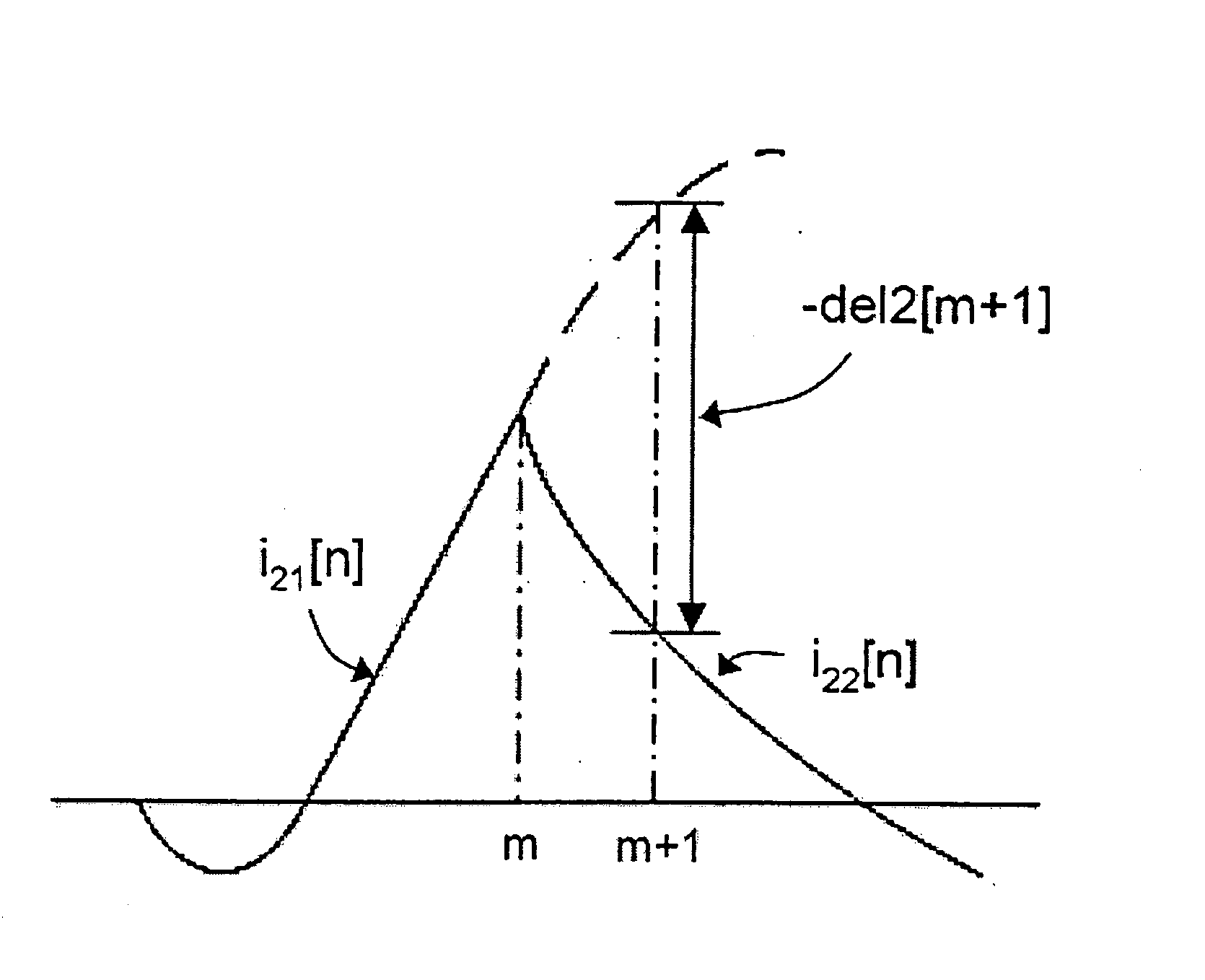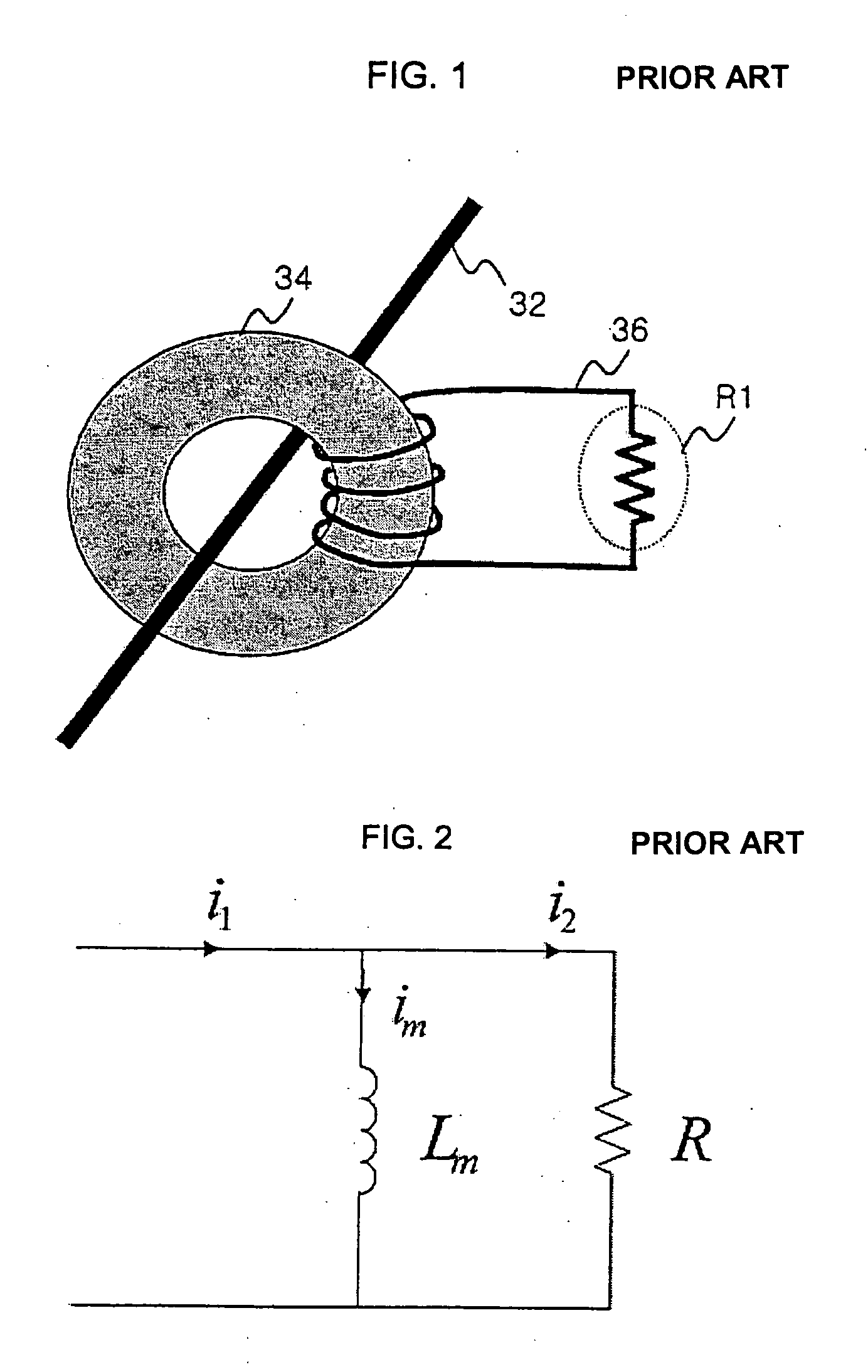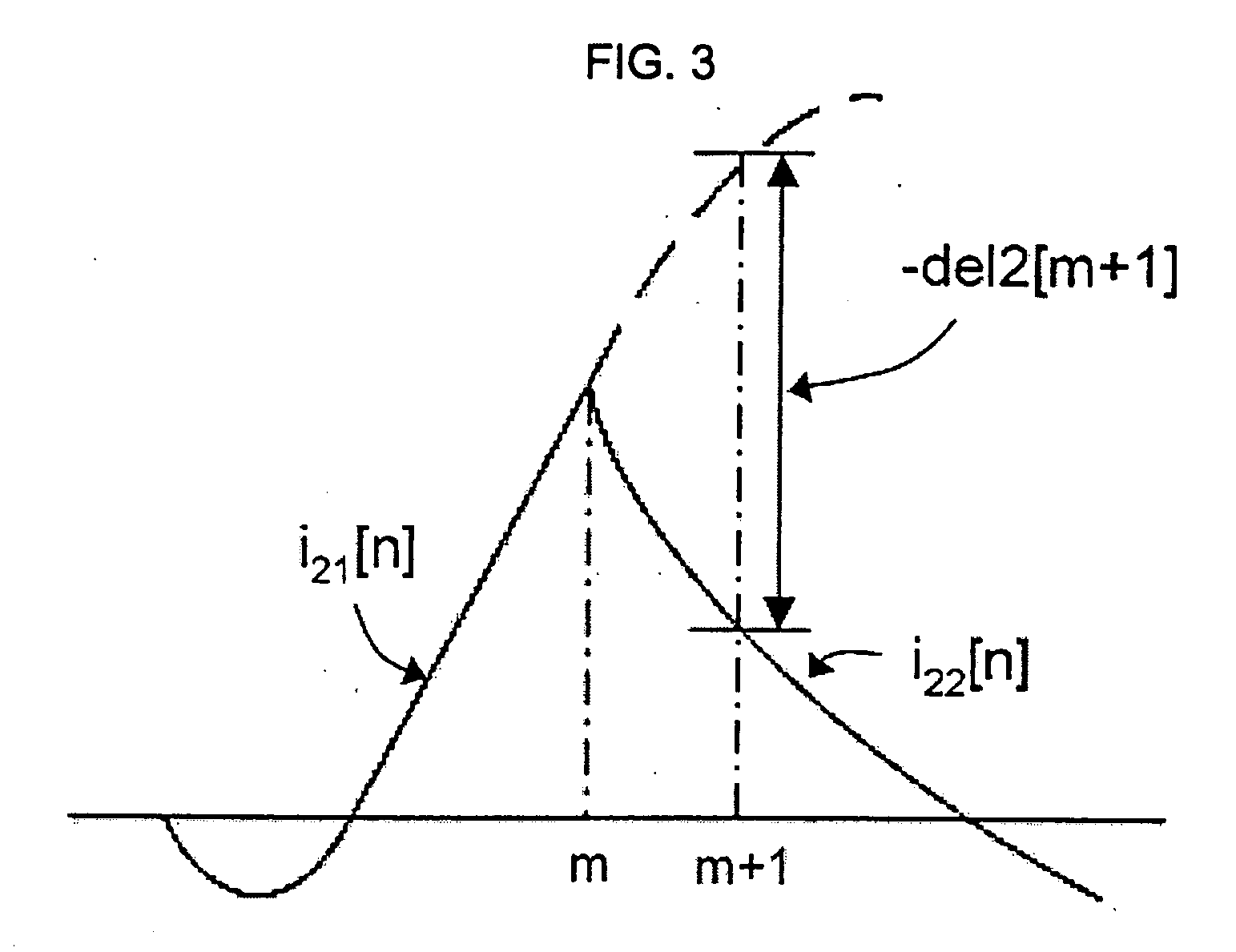Method for compensating secondary current of current transformers
- Summary
- Abstract
- Description
- Claims
- Application Information
AI Technical Summary
Benefits of technology
Problems solved by technology
Method used
Image
Examples
Embodiment Construction
[0028] A preferred embodiment of the present invention is described below in detail with reference to the accompanying drawings.
[0029]FIG. 3 exemplarily shows the transition of secondary currents i2[n] (solid line) actually measured in the vicinity of the saturation starting point of a current transformer. The current transformer is saturated at the time n=m. Currents are measured after saturation. In this case, secondary currents measured before saturation are represented by i21[n] and secondary currents measured after saturation are represented by i22[n]. Since secondary currents i1[n] consistent with a current transformation ratio are actually measured secondary currents, that is, i2[n] measured before saturation, the actually measured secondary currents substantially consist with the i22[n] in the drawing, which reflect the secondary currents i1[n] consistent with the current transformation ratio. After saturation, a secondary currents i1[n] consistent with a current transforma...
PUM
 Login to View More
Login to View More Abstract
Description
Claims
Application Information
 Login to View More
Login to View More - R&D
- Intellectual Property
- Life Sciences
- Materials
- Tech Scout
- Unparalleled Data Quality
- Higher Quality Content
- 60% Fewer Hallucinations
Browse by: Latest US Patents, China's latest patents, Technical Efficacy Thesaurus, Application Domain, Technology Topic, Popular Technical Reports.
© 2025 PatSnap. All rights reserved.Legal|Privacy policy|Modern Slavery Act Transparency Statement|Sitemap|About US| Contact US: help@patsnap.com



